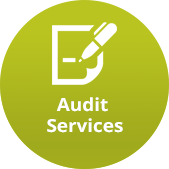July 2014 Newsletter
In this edition:

Are you claiming all the Fuel Tax Credits you're entitled to?
Some taxpayer's may be able to claim more
A recent decision by the Administrative Appeals Tribunal (AAT) means some taxpayers may be able to claim more Fuel Tax Credits (FTC's). Some may even be able to amend already lodged Business Activity Statements to increase the amount of FTC's refunded.
Under the terms of the Fuel Tax Act 2006, taxpayers that are registered or required to be registered for GST can claim fuel tax credits for any taxable diesel fuel they use in carrying on their enterprises.
Generally, the amount of the credit is the full amount of duty payable on the fuel, but this amount is reduced depending on the type of fuel used, the business activity it is used in and the amount of public road use. Accordingly, most general on-road users claim a rate of 12.003 cents per litre.
However, a recent decision by the AAT in Linfox Australia Pty Ltd v Commissioner of Taxation [2012] AATA 517 ("the Linfox decision"), means that taxpayers are entitled to recover fuel tax credit refunds (and a higher fuel tax credit rate on a prospective basis) for all fuel used in heavy vehicles for purposes other than propulsion of the vehicle.
Specifically, this includes, but is not limited to, the following:
- In refrigeration units attached to refrigerated trailers or vans;
- In powering the auxiliary equipment attached to concrete agitators;
- In powering the auxiliary equipment attached to waste management;
- In pumps attached to dry cement tankers or grain tankers;
- In the air-conditioning units of buses or coaches; or
- In the tipping mechanism attached to tippers.
The Linfox decision also means that taxpayers are entitled to 38.143 cents per litre for the fuel used in these non-propulsion activities and not the applicable on-road rate (currently 12.003 cents per litre as noted above).
As most vehicles have only one fuel tank, providing fuel for both propulsion and non-propulsion activities, an apportionment will be required, and this may prove difficult for most taxpayers.
Accordingly, the ATO has issued 'safe harbour' rates to assist small to medium taxpayers with determining the fuel used in non-propulsion activities. These rates can be used with confidence by taxpayers in calculating their fuel tax credit entitlement, but may not necessarily maximise the amount that can be claimed. Where taxpayers believe they can apportion fuel between propulsion and non-propulsion activities to achieve a better result, they should consider doing so.
Taxpayers who have claimed fuel tax credits in the past, or who think they may be entitled to do so because of the Linfox decision, should also consider the following:
- Reviewing historic fuel tax credit claims; and
- Assessing fleet composition to determine those vehicles eligible for an additional credit as a result of the Linfox decision.
As always, your Goodwin Chivas & Co advisor will be available to assist, and can be contacted on 02 9899 3044.
Contact details
Suite 401 29-31 Solent Circuit
Norwest Business Park
Baulkham Hills, NSW 2153 Australia
View location map
P:
(02) 9899 3044
F: (02) 9899 1524
About Us
Our Team Members are the heart and soul of our business. Our team's guiding principles are integrity, respect, teamwork, achievement and innovation. Our guiding principles are the keys to our culture and to achieving our vision.
Resources
We offer a range of free and easy to use
online resources and tools including...











